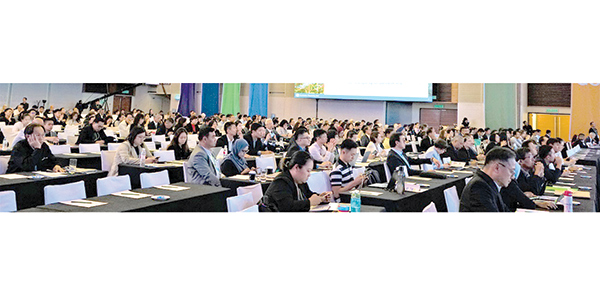Lessons from Sarawak HEP projects
Published on: Wednesday, January 15, 2020
By: David Thien

KUCHING: There are new lessons for Sabah to learn from hydroelectric power projects in Sarawak’s interior areas that serve as catalysts to stimulate rural development other than development of coastal areas.
This prong of rural development will cover Sarawak interior areas of Bakun, Murum, Bengoh, Baram, Tunoh and Baleh as accelerating Sarawak’s economic growth potentials is in tandem with ongoing infrastructure development from Pan Borneo Highway linking Sabah, besides its seaports and airports.
ADVERTISEMENT
While the largest state in Malaysia is strong in the oil and gas sector, Sarawak’s Hydrogen Economy 2030 will also serve to decarbonise Sarawak’s economy as hydrogen enable deep decarbonisation across the energy and industrial sectors through its production of low or zero emission sources being renewable.
“These objectives can only be achieved if we increase high-value activities in remote areas,” Dr Muhammad Abdullah Bin Haji Zaidel, the Director of Economic Planning Unit of Sarawak said at the recent Sustainable & Renewable Energy Forum (Saref 2019).
He was also championing Sarawak’s 6R efforts – Rethink, Reuse, Recycle, Repair, Reduce and Refuse for a sustainable future and renewable dynamic economy.
The key objective of Sarawak government is to accelerate income growth and reduce income disparity for Sarawakians with cheap electricity to stimulate entrepreneurship. There is great expectation that Sarawak Chief Minister will call for a fresh mandate this year when the Pakatan Harapan parties are still not cohesive yet in Sarawak.
ADVERTISEMENT
Dr Muhammad Abdullah: “The Sarawak government is working towards a balanced economic development through the emphasis on inclusivity or what we call rural transformation.”
“In line with this, basic infrastructure will be provided, socio-economic programme will be introduced and human capital will be developed.”
ADVERTISEMENT
Also being involved is the application of hydrogen across a range of industrial processes as feedstocks as well as energy mixes for heating and transportation needs.
According to Dr Muhammad Abdullah, one million hectares of totally protected areas were identified for Carbon Credit Programmes as 7.8 million metric tonnes of carbon emissions could be reduced annually through such conservation efforts.
“Funds are to be ploughed back for tree planting, reforestation and conservation efforts,” he said adding that, “use of blockchain, IoT, IR4.0, AI and CRISPR technologies could further intensify our efforts in driving the next frontiers across various sectors, as integration of all these is key to catapult Sarawak’s economy forward.”
With this achievement, modernisation and commercialisation of agriculture can be enhanced.
“We can produce our agricultural products on a bigger scale for exports, well connected to the global wholesale retail supply chain which will create a critical mass potential in the rural areas greatly impacting the whole rural economy sustainably,” Dr Muhammad Abdullah said.
Stay up-to-date by following Daily Express’s Telegram channel.
Daily Express Malaysia




